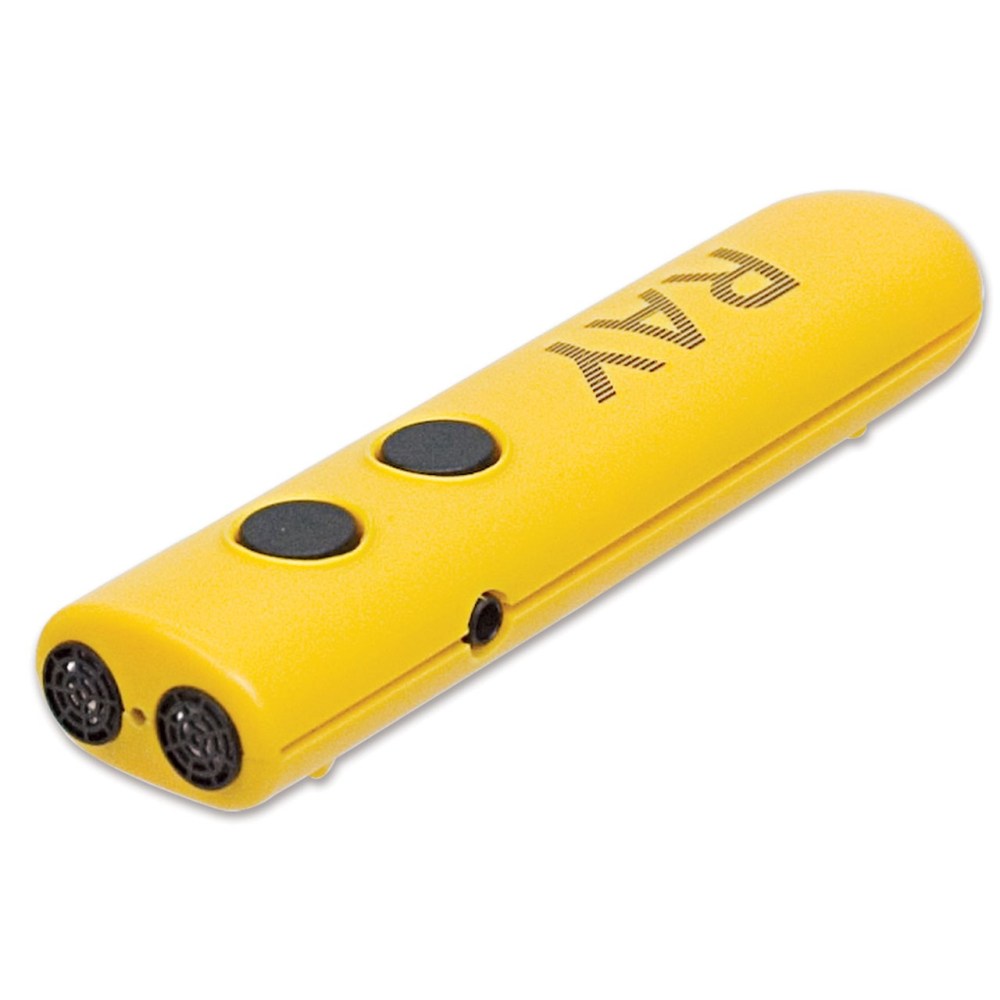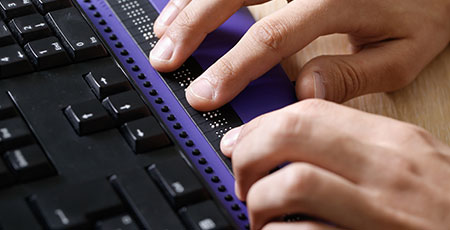Discover Ingenious Tools Designed for the Aesthetically Impaired
The advancement of cutting-edge devices for the visually impaired represents a considerable development in accessibility and self-reliance. Technologies such as smart glasses with AI capacities and mobile applications designed to give auditory summaries are improving everyday experiences for customers.
Smart Glasses for Navigation

Smart glasses developed for navigation are revolutionizing the means aesthetically impaired individuals connect with their setting. These sophisticated devices make use of a mix of video camera technology, expert system, and auditory feedback to give real-time info about surroundings. By using barrier discovery systems, wise glasses can notify customers to prospective risks, making it possible for much safer movement in both acquainted and unknown settings.
The assimilation of GPS modern technology even more enhances navigating capabilities, enabling users to obtain acoustic directions as they relocate. This hands-free approach not just fosters freedom however also equips aesthetically impaired people to navigate urban landscapes with increased confidence. In addition, numerous clever glasses are equipped with functions that identify sites and road signs, supplying contextual information that improves the user experience.
Moreover, the advancement of these tools is continually progressing, with business functioning to improve the precision of things recognition and broaden the variety of navigational features. As clever glasses become much more obtainable and cost effective, they hold the potential to considerably change day-to-day life for visually impaired users. Eventually, these cutting-edge devices stand for a crucial step toward inclusivity, offering boosted mobility and a higher sense of autonomy for individuals navigating the world around them.

Mobile Apps for Daily Living
Exactly how can mobile applications improve the daily lives of visually damaged individuals? Mobile apps are changing the way aesthetically impaired individuals browse their environments, handle day-to-day jobs, and accessibility information. These applications give important assistance via various performances, cultivating freedom and improving lifestyle.
A number of cutting-edge mobile applications are designed particularly for day-to-day living. As an example, apps like Be My Eyes link aesthetically damaged customers with sighted volunteers through video calls, allowing them to get real-time help with jobs such as reviewing tags or navigating unknown areas. Seeing AI, developed by Microsoft, utilizes synthetic intelligence to describe environments, checked out text, and identify objects, properly changing a mobile phone into an effective device for everyday assistance.
Additionally, navigating apps tailored for the aesthetically impaired, such as Aira and BlindSquare, offer audio-based instructions and ecological information, making it possible for customers to traverse their surroundings safely and with confidence. Beyond navigation and prompt help, mobile apps additionally sustain organization and job administration, with features that aid individuals establish tips, create to-do checklists, and track consultations. In summary, mobile applications act as crucial sources, empowering aesthetically impaired individuals to lead even more independent and satisfying lives.
Wearable Technologies for Assistance
Empowerment via innovation is significantly obvious in the world of wearable tools designed to aid visually damaged individuals. These cutting-edge tools integrate effortlessly into life, improving navigating and giving crucial responses to customers. Smart glasses geared up with video cameras can identify faces and check out text aloud, allowing customers to communicate even more with confidence in social and professional settings.
Another significant innovation is the use of haptic comments systems in wearable devices. These systems utilize vibrations or other tactile signals to convey information regarding the individual's atmosphere, such as barriers or adjustments in surface, boosting wheelchair and security. Wearable innovations additionally consist of wristbands that attach to smartphones, alerting customers to notices with refined resonances, therefore improving connectivity without reliance on aesthetic hints.
As these technologies remain to evolve, they are not just enhancing self-reliance for visually damaged individuals but likewise promoting a better feeling of addition in society. By bridging the gap between obstacles encountered in day-to-day living and the capacity for freedom, wearable innovations work as pivotal devices in the pursuit for equal rights and empowerment for those with aesthetic disabilities.
Sound Description Tools
Sound summary tools play an important role in boosting ease of access for aesthetically damaged individuals, offering them with the capability to engage with aesthetic media. OCR devices for the blind. These devices supply narrated summaries of essential aesthetic aspects in movies, television programs, and live performances, ensuring that individuals can fully understand the context and feelings shared through visuals
Sound description can be incorporated right into different platforms, consisting of streaming services, movie theater screenings, and live movie theater. Many prominent streaming services now include audio summary as an availability feature, enabling visitors to select it conveniently. Along with conventional media, specialized apps likewise exist, providing audio descriptions for art exhibitions, museums, and other cultural occasions.
The effectiveness of audio description rests on the ability of the narrators, who should share aesthetic details succinctly without interfering with the initial sound. Advancements in this area are likewise leading the way for more customized experiences, where individuals can readjust the degree of information and pacing according to their preferences.
Braille Innovations and Gadgets
Braille advancements and devices have actually Visit This Link considerably changed the method visually damaged people communicate with message and info. Modern advancements have actually brought about the development of functional devices that enhance literacy and freedom among customers. Notably, Braille show modern technologies have actually evolved, permitting dynamic analysis experiences. These gadgets convert digital message right into Braille, enabling customers to access a large array of info on computers, mobile phones, and tablet computers.
Moreover, portable Braille notetakers combine conventional Braille input with contemporary capabilities, promoting note-taking, organizing, and document editing on the go. Screen readers for the blind. These small gadgets commonly include text-to-speech abilities, connecting the space between Braille and auditory information
Furthermore, cutting-edge Braille printers have actually arised, enabling users to generate Braille tags, records, and academic materials successfully. This access cultivates higher involvement in professional and educational environments, inevitably advertising inclusivity.
Moreover, research study into wise Braille innovations remains to expand. Instruments that include fabricated knowledge are being explored to supply real-time navigation Extra resources aid and contextual info, boosting the individual experience in diverse settings. In general, these developments mirror a dedication to empowering aesthetically damaged individuals with innovation, ensuring they can conveniently gain access to and involve with the world around them.

Final Thought
The advancement of cutting-edge tools for the visually damaged significantly improves freedom and high quality of life. These innovations not just foster higher incorporation however additionally promote freedom in daily tasks, ultimately adding to an extra fair and available society for aesthetically damaged individuals.
As wise glasses come to be much more cost effective and accessible, they hold the prospective to dramatically transform everyday life for aesthetically damaged users. Mobile applications are changing the means aesthetically impaired individuals browse their environments, handle everyday jobs, and access info. Applications like visit homepage Be My Eyes connect visually impaired individuals with sighted volunteers using video calls, enabling them to obtain real-time aid with tasks such as reading labels or navigating unknown areas.In addition, navigation applications tailored for the visually impaired, such as Aira and BlindSquare, provide audio-based instructions and ecological details, enabling users to traverse their surroundings securely and with confidence.The advancement of innovative tools for the aesthetically damaged significantly enhances independence and high quality of life.
Comments on “OCR Devices for the Blind: Transforming Text into Speech with Ease”